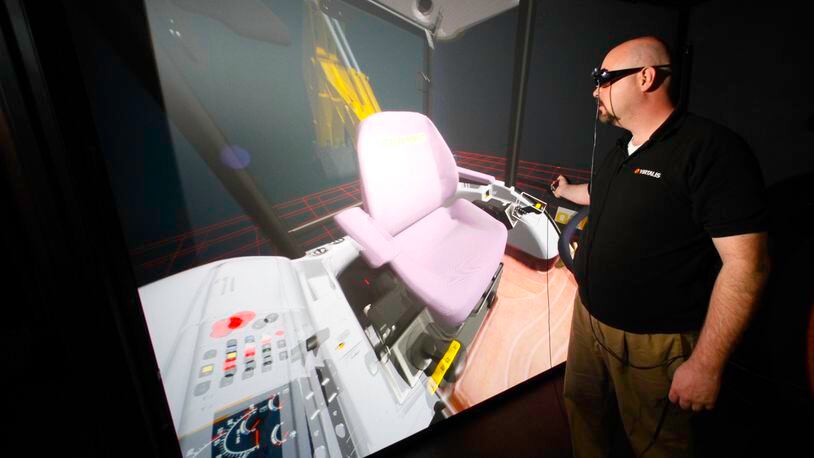Virtalis, based in Manchester, England, specializes in advanced visualization and virtual-reality display systems and software. The company provides a range of immersive, collaborative 3-D environments to businesses across the automotive, aerospace, construction, medical, military and retail sectors worldwide, officials said.
Virtalis opened its U.S. office at 1952 Woodman Center Drive in Kettering in October 2009. The company, founded in 2003, also has an office in Germany. Virtalis has more than 30 employees, including three in Kettering. Ewing declined to disclose the privately held firm’s annual revenues, but said they are growing at a rate of about 20 percent per year.
Virtual-reality simulates a person’s physical presence in a computer-generated environment, often through the use of rear-projection displays, stereoscopic glasses and a glove or wand that allows the user to interact with objects in that environment.
Experts said the technology can be used for military, medical and manufacturing simulation-based training; retail customer interaction management; industrial design evaluation; and concurrent engineering, among other applications.
Virtual-reality systems allow companies to cut costs and time, maintain financial and organizational control over the development process, and digitally evaluate products before having them created, according to Research and Markets, a global market research firm.
For example, a manufacturer designing a new tractor prototype can use a virtual-reality system to put a designer into an accurate simulation of that tractor’s cab, Ewing said. Using an active glove, the designer can then check to ensure that the tractor’s operator can reach the controls. “This is all in the virtual world before we build, so we don’t build something that is not functional,” he said.
Consumer product companies and retail chains use virtual-reality technology to test store displays, tracking customers’ eye movements as they walk down a virtual store aisle to determine the best product placement, Ewing said.
Virtual prototypes of products or systems can be stored and shared electronically across a company, allowing engineering, production and maintenance staff to rotate and examine all aspects of the same 3-D model, Ewing said. “If you are looking at it with a 2-D drawing, it is much more difficult for these upstream and downstream groups to recognize what it is they are really looking at,” he said.
Virtalis software can render clients’ computer-aided design (CAD) data to create 3-D virtual models and environments for use on immersive displays. The company also designs and installs a variety of interactive 3-D visualization systems that range from portable displays for trade shows to multi-walled installations that surround the user on four or five sides, including above and below. In addition, Virtalis has a head-mounted display system that allows the user to move around the virtual environment unrestricted.
Virtalis has installed hundreds of such systems across the globe for clients that include Airbus, Fiat Group, Leyland Trucks, BAE Systems Submarine Solutions and the Royal Air Force, Ewing said.
The systems range in price from several thousand dollars to several million dollars, depending on the type and complexity, said Kalen Gordon, a Virtalis installation and support engineer.
Gordon, who started with the company in 2008, said he was recruited along with fellow engineer David Blacklock because of their expertise in multi-walled virtual-reality systems, which Virtalis markets as the “ActiveCube.” Virtalis located its U.S. office in Kettering because both engineers live in the area, Gordon said.
The Dayton-area location also offers convenient access to much of the U.S., as well as proximity to Wright-Patterson Air Force base and its suppliers, some of whom are Virtalis customers, Ewing said.
In addition, Virtalis is working with area trade show companies to increase the use of virtual-reality technology for that market. “It’s got a lot of pull power and it impresses people,” Ewing said.
About the Author
